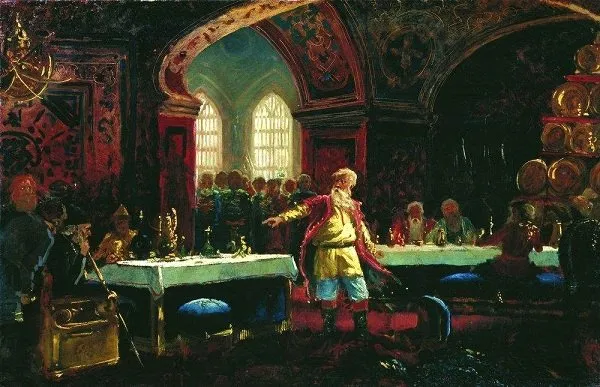Selfish oligarchs, Western '5th columns' in Moscow, Western intrigue trying to destroy Russia, Jewish capital working with Islamic radicals to undermine Russia from the south ... Sound familiar?
A brilliant administrator, while under attack on all borders, Ivan modernized and improved Russia, introducing a legal system, a world class military, and most importantly, trade and manufacturing. He was relentlessly demonized in the West by people who hated his success. If not for him, it is all but certain that Russia would have ceased to exist.
"Ivan was a good, virtuous and enlightened leader at a time where evil was thought to have triumphed. Ivan alone kept the floodgates of anarchy closed, as they were to break down after his death ...
... In 1601, just a few years after Ivan's death, Russia was starving, leaderless and under attack. Again, under elite rule, with no ruling monarch, Russia was plunged into years of war and violence ... Nihilism is the rule of oligarchs, “strongmen” who rise when legitimate power fails.
... Whether it be the Shuisky yesterday or Guzinsky today, the agenda remains the same."
by Dr. Matthew Raphael Johnson
Russia and the World at the time of Ivan's Birth
Russia has long been considered the land of darkness. Beginning with the Renaissance disdain for the medieval world, the rise of international banking, the Polish/Jewish alliance in Central Europe, and the British Enlightenment, Russia and Spain have been stigmatized as just a bit better than animals.
That the resultant ideology of “progress” will be the primary justification of the attempt to enslave or destroy those “animals” should come as no surprise. To separate the industrial revolution from colonialism and slavery is absurd and intellectually dishonest. Ireland and Russia are two cases in point. However, this essay will focus on the very long reign of Ivan IV “the Terrible” of Russia (1530-1584).

A new, 2016 statue to Ivan in the city of Oryol
Modernity and Progress were the justifications for the global empire of the west. Genocide was the norm from Ireland to Arizona, from India to Ukraine. The patristic philosophy speaks constantly about the destruction that the passions cause. In this case, the unchecked rule of oligarchy that is the foundation of the Enlightenment shows just what can happen when ego goes unchecked and the superficial idea of “progress” is harnessed to justify the “temporary sacrifice” required to enter the promised land.
The East was colonized by foreign capital in this period, except for one entity. The Russian empire rejected the Enlightenment idea, represented later by the upper layers of the nobility, mostly foreign, brought into Russia at the end of the reign of Tsar Alexis. Mobilized by Peter I, Russia was nearly an internal colony of its own westernized oligarchy. This, however, is in the future from the time of Tsar Ivan. The point is that Peter and his ilk needed to make an explicit break with Old Russia in order for his revolution to take place.

In the 15th and early 16th century, Russia was the last remaining Orthodox power in the world. Russia took her national character from the fact that she was born in the harsh realm of the forested north coveted by Poland, Sweden and the Papacy, and the exposed south constantly under attack from various Turkish tribes and slave raiders from everywhere. The result was that the Russian state was forced to become centralized and militarized. From the east, south, west and northwest Russia was surrounded by enemies with one thing in common: their ruling classes saw Russian “barbarism” as an excuse to colonize this rich land.1
The International Context: Poland, Turkey and the Passions
Russia's most obnoxious and lawless enemy was the Polish oligarchy, the szlachta.
“Poland” was not a state or nation in the modern sense. Russia was explicitly aware of her state's origin and ethnic center, as were the Cossacks, Greeks and Serbs. Their states and empires were ethnic in that they had a strong racial core, common religious faith and clear linguistic and legal distinctions with their neighbors. This cannot be applied to Poland until the 20th century. Poland was a loosely connected set of noble estates, each with its own law and private army.
Catholicism served as a fragile glue quickly torn asunder by the Reformation. “Polish” military force came from the Confederations, alliances of powerful clans to pool resources to fight a specific battle and then disband. These alliances, formal or no, were the same as “Poland.” The monarchy was very weak and held in contempt by the nobility.2
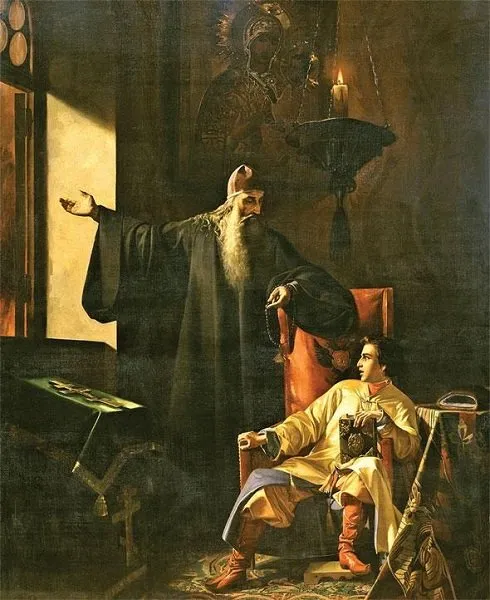
The Polish szlachta referred to themselves as Sarmatians, an Aryan tribe first found in Central Asia. By the third century BC, they were fighting the Scythians on the Pontic Steppe. Herodotus claims this tribe descended from a mix of renegade Scythians and Amazon warriors, while Strabo does not make a distinction between Scythian and Sarmatian at all. It is clear that this tribe slowly subdued the Scythians and fought the Germanic tribes to the north of the Roman empire to a standstill. Ptolemy suggests that their final settlement is roughly at modern Poland at the mouth of the Danube.
The Polish elite, at the height of their power in the 16th century, came to believe that they were not Slavs like their peasants or the hated Russians, but descendants of these Aryan-Asian Sarmatians who conveniently had the ancient duty to rule over the Slavic cattle. The noble estates loosely called “Poland” at the time had one purpose and function: to protect the extremely violent practices of serfdom and to maintain the fiction of Sarmatian supremacy over the Slavs.3
Russia was in the midst of a life and death battle with the Ottoman Empire during much of the era covered here. In 1475, the Ottoman Turks managed to bring the Crimean fragment of the old Horde under its control. Russia in the 15th century was under constant attack from the south, with slaves being the primary prize of these border raids. When the Crimea stood behind the Ottomans, the power and devastation of these raids increased in scale and organization. The huge alliance of Tartar Kazan, Tartar Crimea and the Ottoman Turks then partnered with Italian and Jewish bankers to share the profits of the slave trade. These parties raided southern Russia constantly, removing hundreds of thousands of Slavic slaves, bringing them to the slave-marts of the Black or Caspian Sea. This is the environment that Ivan inherited.
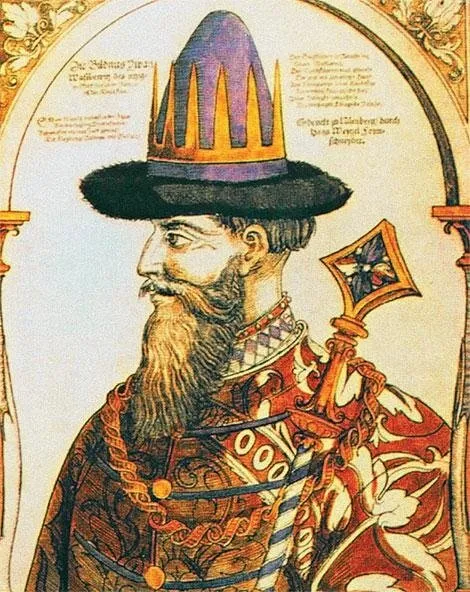
There is no understanding Russian policy at the time without first grasping these facts.
The Balkan Slavs and the Russians were at war with a huge network of capital at the end of the Renaissance that has yet to be analyzed in English. The tight bond among immensely wealthy Jews, European elites and Tartar empire-builders would destroy the entire master narrative of official liberal historiography.
This alliance, and several others to the north and west, caused Moscow to engage in Herculean efforts to mobilize enough men and resources to keep three or four large enemies at bay simultaneously. This had to be done also with harsh winters, poor soil, difficult travel and internal divisions often goaded by foreigners. This is the source of the Muscovite policy of centralization and service-estate monarchy. It is the historical condition for the Russian mind and defined the Russian national character.4
The literature in English usually decries the “lust for power” of the tsars and the “massacre” of helpless Muslims and defenders of Kazan under Ivan IV. The official narrative is uncomfortable with the fact that Russia barely escaped total genocide at this time, and only by the total mobilization of every possible man to create a war machine capable of defending its own borders was Russia ever preserved at all. In the best of times this was a risky gamble. At the worst of times, millions of Russians were exterminated, enslaved and exploited.
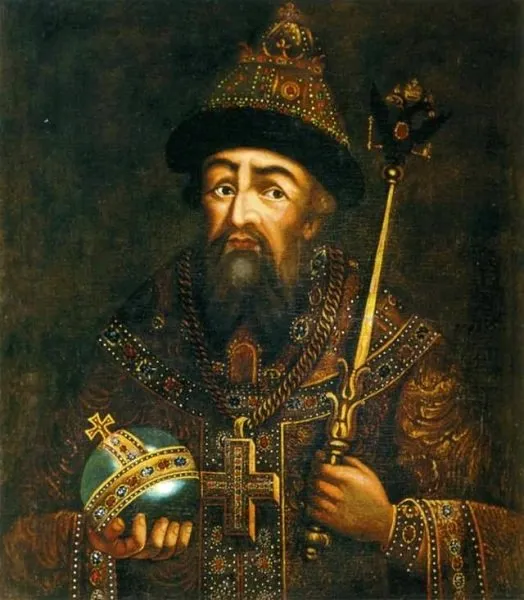
Before the Mongol attacks, Russia had been torn apart by arrogant feudal lords in Galicia and Kiev itself, and only the rapid rise of Vladimir-Suzdal was the unity of Russian idea saved. The fragmentation of Kiev is largely the result of a growing and concentrated oligarchical class, which usually is parallel to the growth of cities. Concerned with profits, urban elites are not interested in being part of a national revival or Orthodox resurgence.
Princes then struggled to maintain even a formal unity over her cities. The Mongols ended this struggle, but it taught Russians that centralization and military force are the main allies of the Russian state. For alienated American academics to piously condemn the royalist constitution of Old Russia from the comfort of their pricey condos and attractive student “assistants” is the height of American stupidity and vulgarity.5
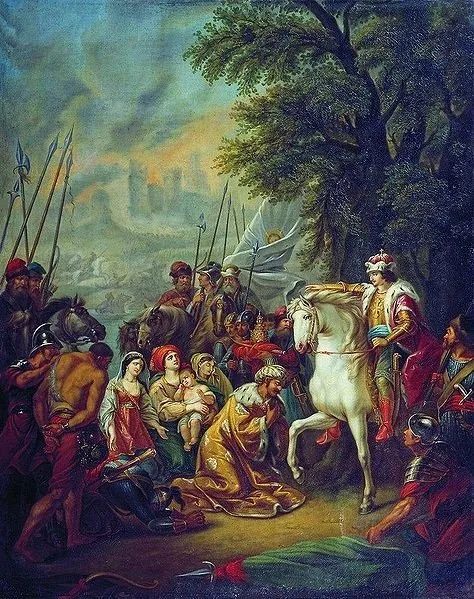
Russian historiography up until the 20th century had been generally positive in its estimation of Ivan. They placed Ivan in the proper context of European events. The bizarre and dogmatic Anglo-American loathing for the man developed only in an age where liberalism reigned unopposed in the ivory tower. Ivan IV could not but seem the typical embodiment of benighted, ignorant Slavs and the royal house of Russia specifically.
Older historians were far more skilled in dialectic. Karamzin would not accept the foreign reports on Ivan, partly because they were contradictory and partly because many were written as a means to influence European opinion away from the Russians.
Rather, he argued that the nobility were the main opposition to the crown and hence, to a unified Russia. It was Nikolay Ustryalov that developed the notion of “two Ivans,” one in the first half of his reign and the other, negative part, developing after the death of Anastasia, his wife. Ustryalov created the “paranoid” Ivan that became canonical in the west. This was taken up by Oleg Platonov later.
Mikhail Pogodin corrected this view, arguing properly that Ivan was far less violent than the creators of the new states in the west. Overcoming feudal fragmentation was a pan-European movement and could only be done violently. Sergei Solovyev was very similar in this regard. Platonov's view was that Ivan's policy was unnecessary, but understandable. The result was that the transfer of land title from the old elite to the Oprichniki harmed the economy and created legal confusion.
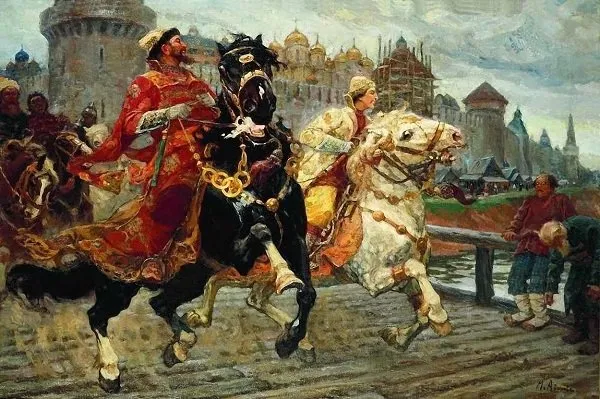
Konstantin Kavelin too placed Ivan in a broader context, though in his case, an idiosyncratic one. His view was that the old elite destroyed by Ivan represented the much older tribal and clan idea. Thus, Ivan was a revolutionary and positive development, finishing the project started by Vladimir I at least. Historians should avoid the personal-account of history, having no idea what motivates people.
A bad historical argument usually has some claim to a leader's internal mental state. These should be dismissed unless there is some evidence that manifests this state. In other words, claiming that a leader is “jealous” or “paranoid” and hence, took a certain action is not an argument at all. Its poor speculation.6
Noble Rule and Ivan's Youth
The origin of the more exaggerated claims against Ivan are domestic, most are foreign. Some of the more absurd claims, such as Ivan's “first execution” at age 13, or Kurbsky's tale that Ivan tortured cats as a boy, are merely propaganda that is typical during war. By 1538, Ivan saw his mother poisoned, leaving Ivan, just out of toddler-hood, now an orphan. Prior to Ivan taking control, the oligarchy raped the country in an orgy they knew would likely end when Ivan took power. The result was that they took what they could with massive speed. From 1538 to 1543, Moscow was a place of violence and bloodshed.
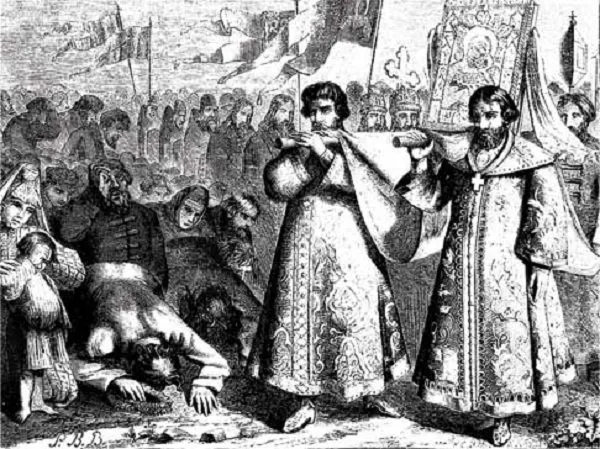
The Italian architect Fryazin, for example, was forced to flee back to Italy because he said the boyars had made life in Moscow completely unbearable. The state was little more than a stage for conspiracies and coups. Ivan, at the time only 12, was terrified and feared for his life. The Shuiskys, intoxicated with the joy of victory over their rivals, lost all sense of proportion as their passions came to control them entirely.
They plundered the treasury, took all gold stored at the Kremlin, and granted their friends huge chunks of land. The fierce struggle between the boyar clans of Shuisky (descended from Ruirik) and Belsky (from the royal Lithuanian family of Gediminas) kept the child Ivan alive in the hopes he would one day be used as a pawn in future battles. They were mistaken.7
Until 1540 the country was actually ruled by the elite boyars nominally under the Shuisky clan, made famous later during the Troubles.8 The Boyar Duma legislated that its own decrees were to be taken as legally equal to royal charters. The well armed Shuiskys and their large private armies went to war, as powerful governors in the cities and towns behaved “as savage beasts,” stealing what they could before the “government” changed again. Of course, this chaos did not go unnoticed. Boyar oligarchy meant that the southern borders were threatened by Tatars and Turks as the northwest by Lithuania and Sweden. The state was on the verge of death. To be fair, the Belsky clan, coming to power in 1540, did strengthen the state and repelled the attacks. The Shuisky clan was soon to retake power.9
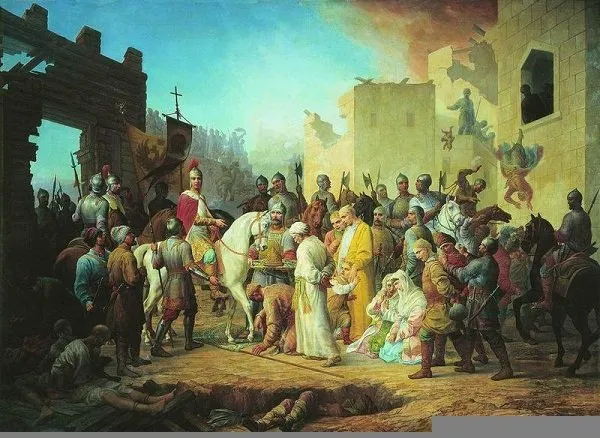
The Russian elite could function only with the crown. They were almost universally hated, and, outside of brief periods of time where they could plunder, for them to rule directly was impossible. No one believed that oligarchs have any right to rule. They can function only with the legitimacy granted by the crown. On the one hand, monarchy was needed to give the oligarchy a productive role and a place in the state.
Yet, this role was always at their own expense. They were given important offices only in exchange for loyalty. This is to say that they were forced to make public use of their plunder.
As the oligarchs realized their time was short, it was only the tears of young Ivan and the intercession of Metropolitan Vorontsov that saved him from death. After that, Ivan, on December 29, 1543, ordered the arrest of Andrei Shuisky, the leader of the feudal oligarchs and the infamous symbol of the financial rape of the nation.
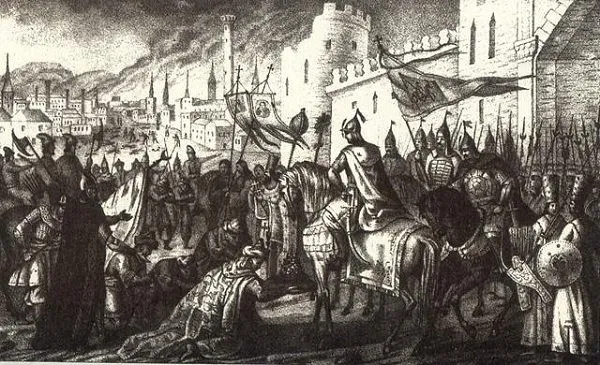
Historians wrongly argue that no trial was held and offenders were executed. They are wrong on both counts. The political acumen of Ivan at this age is remarkable. Using the weakness of oligarchs against them, he realized that as soon as he proved himself competent, the commanders of local armies, commoners, clergy, lower nobles oppressed by the elite and many others would quickly turn on their arrogant masters. Regardless of the torment these pathological elites inflicted on the young Ivan, he treated them with mercy.10
At 13, Ivan still could not rule alone and chose a small council to assist him. Relying on the Vorontsov clan, the young monarch sought to strengthen the state and develop the idea of a unified Russia against the fragmentation caused by the nobility. Seeing their unearned income disappearing, the elite fought back. One method was to create stories of “Ivan the Butcher” for circulation abroad.
Ivan's Accomplishments: Justice as Restraint
In 1550, Ivan called a major sobor11 of both church and “land” (that is, the nation and its various classes), which brought together representatives of the different regions of Muscovy. These meetings created a new code of law and also included the church synod of the One Hundred Chapters.12 The Code (or the Sudebnik) streamlined laws and included a number of new statutes to make the courts more equitable.
Under the new law, for example, it was impossible to arrest a person without explaining the reason for the arrest to his elder, that is, the elected headman of the commune or artel. Various forms of due process were created. Between 1550 and 1560, Ivan IV issued a series of charters that reduced the power of royal governors in the different regions of the Moscow kingdom and handed it over to governors who needed to be approved by the local landowners. They took an oath to both landlords and peasants and to rule according to all laws and customs. All judges were elected and the monasteries formed a strong check on the power of the state.13
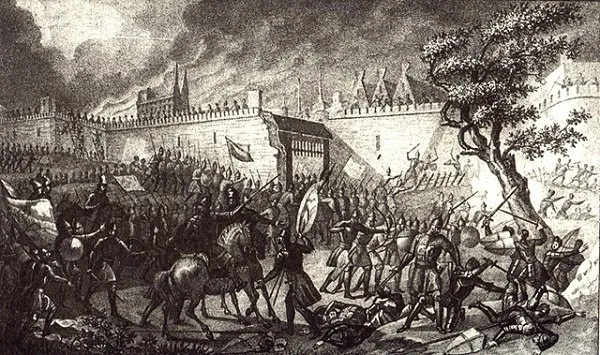
The vast majority of those executed by Ivan belonged to the upper class and were guilty of very real (and not mythical) conspiracies and treason. To reiterate: powerful noble families dominated Russia at the expense of the state. They were richer, more numerous and had more men under arms than Moscow. The very act of founding a standing army was considered “tyranny” by oligarchical intellectuals. All told, verifiable executions in Ivan's 50 year reign came to 3500 people. This is a weekend in the USSR. It comes to less than 100 people a year.
The fact that Ivan the Terrible introduced a reformed, fairer court system and that the death penalty was imposed only on violent common criminals in Moscow and only when approved by the King in person, it is certain that his concern was justice and the rule of law after the anarchy of his youth.
The new court system also makes it possible to say a) the exact number of executions is known; b) they were given a fair trial which was ensured by the involvement of the boyar Duma, or the legislative chamber of this very elite. The special Synodikon books were Ivan's own record of executions for the sake of praying for their souls. By contrast, under tsar Alexis a century later, capital punishment was mandated for 80 offenses, and under Peter I, that increased to 120. Peter I killed far more personally than Ivan did legally. Ivan IV was one of the most humane rulers at the time in Europe.

Iron foundries were founded with state money, and the very distinguished cannon master Andrey Chokhov built what was then considered the finest canon in Europe. His cannon were cast in the particular form using a wax model. Another was Russian builder Fyodor Kon, who built the Moscow walls and stone towers of the Kremlin. He did the same for Smolensk.
Since Muscovy on all sides was surrounded by enemies, Ivan (and all monarchs after him) was forced to improve the Russian army. Since the noble muster was the norm, he created the regular force of the strelets (musketeers or archers) in 1550. He called on the elite of the city and surrounding areas to send their most promising young boys to be trained as the elite Guard of Moscow. Of course, these were modeled on the earlier Oprichniki created under severe stress. In 1556, Ivan published the law on military service of the landowners.
Unpopular, Ivan forced the elite to serve the common good. For every 150 hectares of land (each hectare is about 2.47 acres), they needed to supply one fully trained and armed man. His efforts against oligarchy finally made the service estate actually about serving: without serving the common good, no land would be granted. While compromising over the power of royal governors, Ivan would not budge on this fundamental idea.
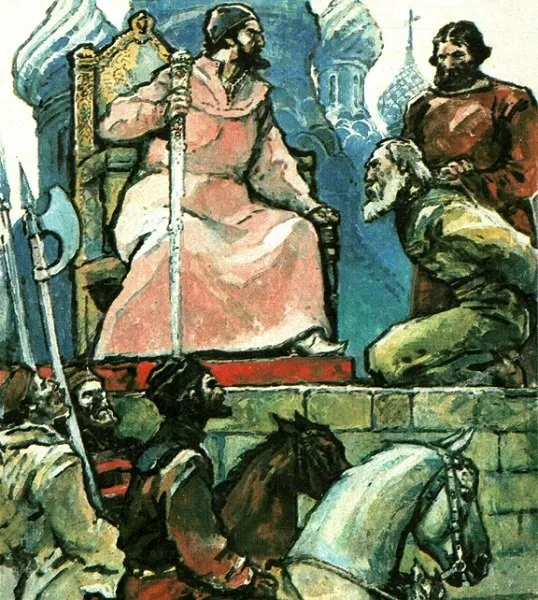
Ivan's reign was a time of substantial economic development and the first overarching economic policy for the whole nation. He sought the development of newer and more advanced crafts and their corresponding guilds. He imported Russia's first printing press from Kiev. In 1564, Metropolitan St. Macarius released his first book, a Slavonic translation of “The Acts of the Apostles” using this press.
In the absence of nationwide market, Ivan IV established foreign economic ties in order to spur a domestic market. In order to establish trade relations with the West for the first time since the Kievan era, Moscow took advantage of her newfound access to the White Sea. According to royal decree, English merchants were granted free trade rights with Moscow as a means of ensuring British cooperation. London created the Moscow Company and brought new techniques in architecture, navigation and shipbuilding into Russia's interior. The specter of a strong land power united with a strong sea power and peaceful trade cooperation between Britain and Russia was seen as a threat to many European powers.
Denmark, Poland, Sweden and Lithuania tried to block this agreement. In addition, officially sponsored Swedish and Polish pirates made predatory raids on Russian and English ships. It is rarely reported that, as a result of this, Ivan retaliated by creating an elite corsair fleet of fast moving ships to intercept and destroy these pirates. This was made easier by the new revenue streams coming from Astrakhan, Kazan and parts of Siberia newly brought into the empire.14
Ivan the Terrible created both land and monetary reform. The ruble was made the sole legal tender in Moscow, while monasteries now paid taxes in money (rather than in military recruits or in-kind payments). Sales taxes became a critical source of revenue and were purely centralized.

Southern and Southeastern trade was essential to ensure a strong revenue stream in case of western blockades. The Volga was the main route to do this. Two Tartar Khanates – Kazan and Astrakhan – blocked the way between Russia and the powerful empires of the far east. They not only stymied Russian trade with Central Asia and the far east, but also raided the eastern Russian border, doing the same to the east that the Tartars were doing in the west. These border raids, often at the behest of western powers, were slave raids, and Russia was constantly drained of her citizens in the slave trade in the east and west.15
In 1552, Ivan brought to Kazan an army of 150,000 soldiers equipped with about 150 field guns. In Kazan, a strong Tartar army was well dug in, so Russian engineers undermined the Kazan walls, placing barrels of gunpowder underneath and collapsed their defenses. About half of this Russian army was Tartar and locally recruited. Once captured, no conversions to Orthodoxy were forced, but they were encouraged under the saintly bishop Gury who was assigned to the city. The Russian empire was not for profit (though profit could be made), but for defense and security.
No imposition of Russian customs was ever public policy, and the Russian tradition of the multinational Eurasian state began. Russian excess in these attacks is certainly legitimate given the hundreds of thousands of Russian citizens sold in slave markets throughout Asia.
In 1556 the king sent troops down the Volga to conquer Astrakhan. Since then, the Tatar threat from the East has ceased to exist. The Volga was finally a Russian river. After the conquest of Astrakhan, Russians began moving south to take advantage of the newly opened trading relations with the east. Moving along the Terek River, they reached the foot of the Caucasus Mountains. There, explorers formed a voluntary army of the “Greben Cossacks” who merged with parts of the Don army.
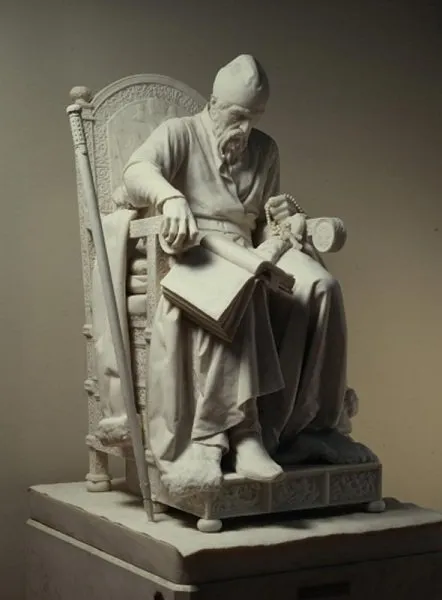
In 1558, Ivan began the war with the Livonian and Teutonic Crusading orders. These had been commanded by the pope of Rome in the 13th century to take as much of Russia as possible while she was under the Mongol yoke. By 1560, Russian forces occupied almost the whole of Livonia, returning several old Russian cities including Revel and Dorpat.
Entirely on the side of people's interests stood the Orthodox Church, who at the time was totally independent with her own courts and law. She always sought to maintain a strong government in Russia that could both protect the nation and control the secular elites. Bishops and large monasteries were a major check on the power of the oligarchs and the two groups were rarely at peace. The church used much from Byzantine and Balkan canon law to develop the theoretical justification for the crown and the centralization of Russian power.
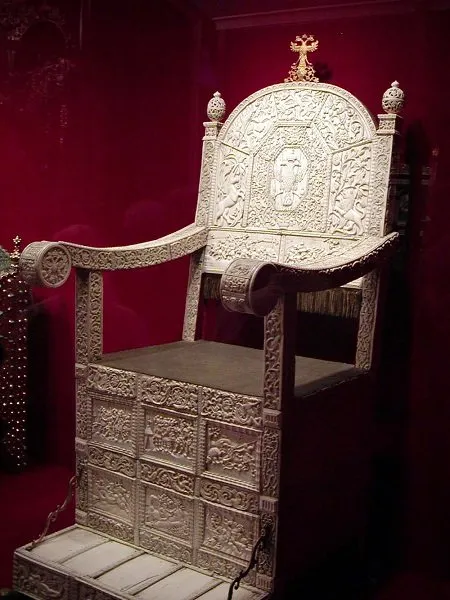
Even in Kievan times, the Old Testament kings were the model and were understood as manifestations of natural law.16 Power is “given by God” in the sense that it is a part of the natural order. It is natural for human beings to organize themselves into functional communities and these require defense, law and judicial institutions. On the other hand, sin, corruption and greed – if unchecked – create the consequent destruction and de-legitimization of these same social structures.
The Orthodox crown is based on national and divine law, which can only concern the public good and the war against the human propensity to follow their appetites rather than intellect. On the other hand, oligarchy is inherently “private,” meaning that they care only for themselves. Oligarchy exists to exploit; kings exist to limit, to draw the boundary and restrain the will.
Among the Polish Confederations for example, military victories by the crown were seen as negative events, since it meant the increase in royal power and prestige. A a strong monarch is the opposite of oligarchy. The rich constantly war against the “father,” the patriarchal principle manifest in the king. The unlimited demands of greed are checked by the limits placed by the monarch in law.
Noble Plots against Russia
Ivan spent his reign fighting battle after battle against the privileged elite. As Moscow made its power clear, the oligarchs began making deals with foreign powers to hand over the country in exchange for a firm title to their privileges. In 1566-1567, Ivan intercepted letters from the Polish regime and the Lithuanian prince to many of the major noble families of the realm.
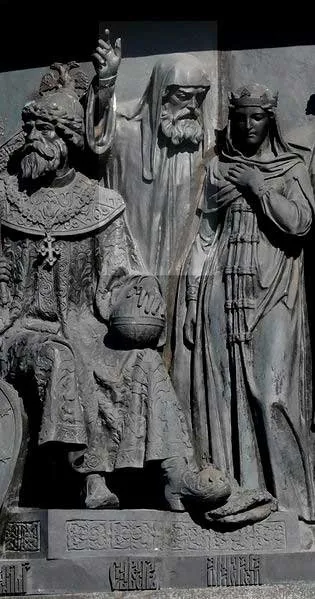
Among them was the Chelyadnin-Fedorov clan whose rank made him the de facto leader of the Boyar Duma and gave him a casting vote in the election of a new sovereign. In addition, a letter from Poland was addressed to Prince Ivan Kurakin-Bulgachov, Prince of Rostov, as well as Prince Ivan D. Belsky and the rest of the highest Duma members.
The letters speak of many deals in the process of negotiation, including the idea of the Polish king that Prince Ivan Dmitrievich be granted vast land in Lithuania for treason against the Russian Tsar. The remaining recipients were feted by Polish elites and negotiating as to who should replace Ivan once hes overthrown.17 In the autumn of 1567, Ivan led a campaign against Lithuania.
There, intelligence gave him more evidence of this treason. The Lithuanian and Polish plan, communicated to elite traitors in Russia, was to take a unit of the army and use it to kill Ivan. From there, the remainder of the now leaderless Russians will be scattered, and this vanguard group would escort the Poles into Moscow. Ivan urgently fled to the capital once he learned this as he had to prepare for this possibility both at home and on campaign.
The head of this pro-Lithuanian group was again Chelyadnin-Fedorov which, according to Kobrin, was “a noble lord, owner of vast estates. . . one of the few figures administration of the time, which did not take bribes, a man of impeccable integrity.” An important political agent of the Polish crown, A. Schlichting, informs Sigismund, the Polish monarch: “Many distinguished persons, about 30 people. . . have committed to writing that have delivered the Grand Duke with his Oprichniki into the hands of your Majesty; if only Your Majesty moved his forces eastward.”
The offenders were arrested. The trial took place Boyar Duma. The evidence was irrefutable: the contract signed by the traitors was in the hands of Ivan. No one denied guilt, since the handwriting matches clearly, so the next step is for the now disgraced oligarch to dissociate himself from the conspiracy. A German spy “Stade” reported that Chelyadnin-Fedorov, Ivan Kurakin-Bulgachova and princes of Rostov were executed as a result.
The problem was that Prince Ivan Kurakin, the second most important member of the conspiracy, was still alive in 1577, 10 years later, as he held several important posts! Drinking on the job, abandoning his garrison command as the Poles took over without resistance. Finally, this fool was executed. He more than likely took it as a favor.
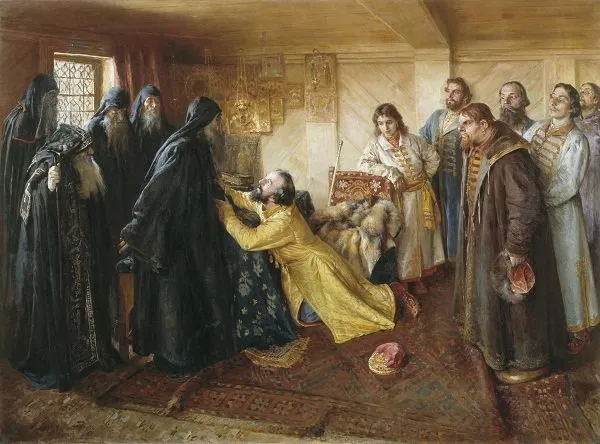
The day that this plot was to occur, the empress Maria Temrykovna died with all the symptoms of poisoning. The royal chef eventually confessed to his part in the murder, and the trail led to boyar Vladimir Andrevitch. Ivan acted quickly, though the false histories in the west claim that this conspiracy led to a massive slaughter. The only death was the ringleader, Vladimir.
Western writers spread rumors about Ivan's violence and paranoia. Some of the rumors spreading in the west included several Oprichniki riding out in a boat to drown rebels – in January. Some have claimed that “200,000” were murdered, but Novgorod's whole population was about 27,000 at the time.18 The point here is that conspiracies against Ivan and Russia were real. Secondly, that the offenders were tried and only a few were executed and finally, that Russia's many enemies had a strong incentive to blacken his reputation.
The real foundation of these early attempts to create an oligarchic republic was the Judaizer sect, an ideology all conspirators against Russia held in common. It seemed that Metropolitan Pimen had been a secret leader of that sect, and Ivan called a synod to deal with these issues. St. Phillip the Martyr had learned quite a bit about the sect, and the Judaizers murdered him before he could testify – Ivan's men had nothing to do with it. The conspirators had stopped up the metropolitan's furnace exhaust and he died of carbon monoxide poisoning. St. Phillip was a martyr, but not from Ivan.

Ivan arrived in Novgorod with a guard of 500 men, and there are no reports of any clashes with noble forces, suggesting that the local garrison remained loyal. It was clear that Pimen's influence ran deep in the local elite. This sect accepted usury and profiteering, so profits skyrocketed, as did interest rates – that was a tremendous incentive to join that sect. The highest estimate of the number of verifiable executions in Novgorod was about 1500 total.
Most of the punishments were confiscation of property or heavy fines. In Pskov, most denunciations for treason turned out to be false and its victims cleared, meaning that trials were reasonably fair. In early May of 1571, as the Livonian war in the north continued to rage, the conspirators found the Crimean Tartars as another possible agent. Military intelligence reported that the Tatars were dormant and not interested in further attacks on Russia.
This story was false and deliberately contrived. As a result of this planted story, Ivan returned to Moscow, satisfied that the southern border was safe. On cue, a massive force of Crimean Tartars were at the border, and some reports put their number well over 100,000, commanded by Devlet Giray. How an army of this size can go undetected is the result of noble perfidy, where Kudeyar Tishenkov had joined the Tartars in a bid to unseat Ivan. Even worse, the local border force refused to move against them. The governors in charge of defense against the Crimea, Volsky and Mstislav, were part of this scheme. Alone, the Oprichnina force stood against this massive array.
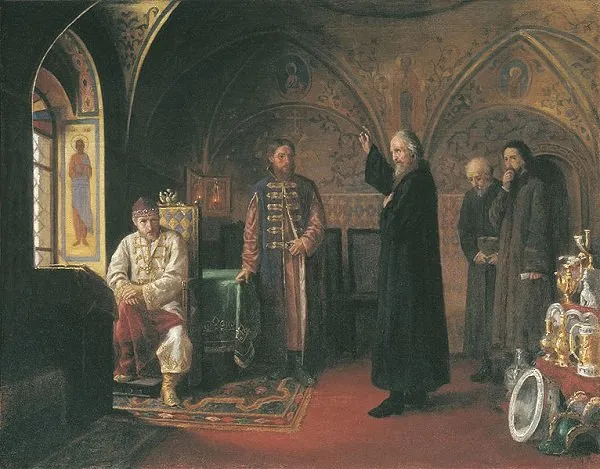
The Oprichnina army under the command of JF Volynov was small in number, perhaps a few thousand at most. The border force under noble control fled the area and returned to Moscow, refusing to fight. Ivan eventually grasped the situation and used only Oprichnina forces to defend the city and Russia's very existence. Far from some fictional horror sect, the Oprichnina was an elite group of warriors and knights chosen for their loyalty as well as skill. Given the sheer number of noble plots, Ivan was forced to create a loyal force that could be counted on against the enemies of Russia foreign and domestic. Keep in mind that the Russian army was from the noble muster, so when nobles were disloyal, an alternative military force had to be created.
The carnage was massive. The Tartars annihilated Moscow's suburbs. The Islamic army's own figures say 60,000 were killed in a massive victory over Russia with many slaves taken. Several noble traitors were executed, including M. Cherkassy, one of the old boyars and Prince VI Temkin-Rostov. Prince Mstislav, one of the ringleaders, was spared at the expressed request of Metropolitan Cyril, who wanted an end to this bloodshed.
Ivan's position was desperate. After this slaughter, The Vorotynsky Commission was called to reorganize border defenses. Part of the plan was to use “chain fortresses” stretching from the Donetsk in the west to the Irtysh in the east. Moving peasants to the area, Ivan created a small army of yeoman smallholders with a single goal: to defend the southern border. Peasants he could trust. Nobles he could not.19
Purification through Asceticism: Noble Treason and the Oprichnina
The beginning of the 1560s was a time of great military and diplomatic victories for Russia. In the summer of 1561, the Swedish King Erik XIV signed a truce with Ivan for 20 years, allowing Ivan to intensify the fight against Poland and the Crimea. Russian expeditionary troops landed in Tauris from the Caspian Sea, causing panic in the courts of the Turkish sultan and the Polish king. In the same year, the Ecumenical Patriarch in Constantinople approved Ivan's claim to the Imperial title, which allowed the Russian Tsar speak on equal terms with all the sovereigns of Europe.
In 1563, Russia took an important strategic region, the city of Polotsk, which opened the road to Vilna, the capital of Grand Duchy of Lithuania. The Crimean Khan Devlet Giray thought it best to stop military operations against Russia and in January 1564, took the oath of allegiance to Ivan. Russia was now a global power.
Then, a very strange thing occurred. At the end of 1564, exhausted by endless intrigues, Ivan resigned his royal crown and left the capital, accompanied by a few loyal servitors. Ivan's motivation was clear: constant threats, the power of the clans, rumors and conspiracies meant that so much that needed to be done was neglected. Ivan saw power is a burden. Regardless of his victories and reforms, the aristocracy, who controlled the entire administration, had their flunkys in all offices, maintained large private armies and were always looking for a way to destroy Ivan. This constant fear wore on him.20
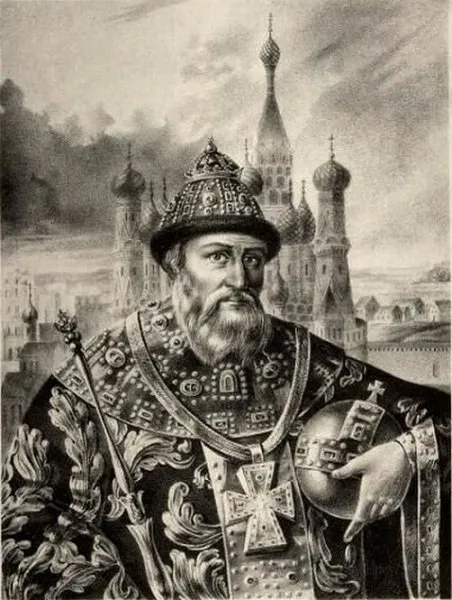
Ivan's unexpected move caused the nobility to panic. No greater proof is possible for the thesis presented here. The oligarchy was aware of their total lack of legitimacy. The common population hated them. Without Ivan, the nobles would be torn apart in peasant rebellions. The population from all classes organized processions to appeal to Ivan to return. Yet, any return without some radical reforms would be futile. The elite and their immense power needed to be broken, or Russia would be no more. Without a firm base of his own, no one could effectively rule for long. Ivan needed a standing army that was dedicated to the vision of Holy Russia, a royal state dedicated to the common good and the ascetic life. This was the Oprichnina.21
The endless irrational and implausible hysteria organized by the partisans of oligarchy from then until the present day has almost eliminated any rational investigation into the problem. The Oprichnina is seen as a cult of fanatics engaging in a reign of terror against the innocent nobility and anyone who got in their way. Peasants, for no reason, were raped and murdered and no one was safe. It was nothing of the kind. However, its power was sufficient to drive oligarchs from Moscow to London into fits of hysteria.
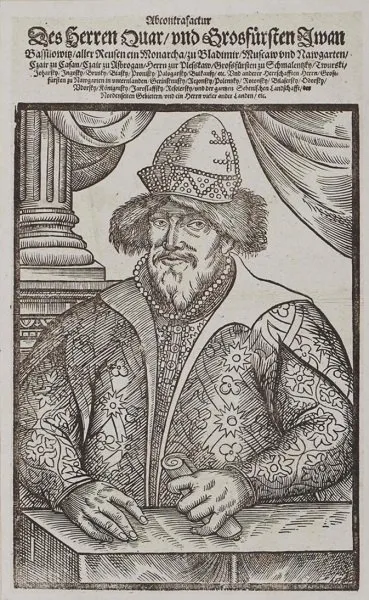
Most often, the term “Oprichnina” in Russian is the assignment of lands from the estate of a deceased serviceman to his widow as a kind of pension. For Ivan, it was a part of Russia, a portion of the country, that Ivan would rule directly. Unsurprisingly, it comprised the most volatile areas ruled by the more rapacious elite. The Oprichnina was organized like a monastic brotherhood, a military-monastic order, common in the west, created to protect the unity of the nation and the purity of the faith. Monastic vows (or a sort) were taken upon entry, as all worldly desires were renounced. At midnight, all stood up for the Office, while Matins began at 4am, leading to the liturgy. The king led by example as he chanted the offices and read the Holy Writings in the refectory. It was a “Crusading order” of a sort that Ivan thought was absolutely necessary to restructure Russia.22
For most modern historians, the Oprichnina created a “reign of terror” enforced by an insane monarch for no good reason. An orgy of killings is said to have taken place, murders of tens of thousands and all, of course, innocent. Metropolitan Ioann of Petrograd, writing in the 20th century, stated that “The establishment of the Oprichnina was a turning point of the reign of Ivan IV. Oprichnina units played a prominent role in repelling the attacks of Devlet Giray in 1571 and 1572 and with their help the conspiracies in Novgorod and Pskov were discovered and defused, conspiracies aimed to bring Russia under the rule of Lithuania. Finally, Russia entered into a period of renewal under the Oprichnina.”23
Tsar against Tyranny: Kurbsky as the Spokesman for Oligarchy
Andrei Kurbsky is one of the heroes of western pseudo-scholarship. In the constant drive to justify oligarchy, western historians, exclusively funded by a similar system in the US, state that Kurbsky was a “loyal soldier” to Ivan. This is false, as this oligarch was almost always antiroyal and advocated a revolutionary republic. Kurbsky is often a symbol of the modern, Enlightened man seeking “liberty” against the “dead weight” of tradition.
He is often interpreted arbitrarily, usually to reflect the present ideological consensus, always at Ivan's expense. Andrei Kurbsky was a military commander against the Poles during the Livonian wars. The incident that changed everything was the 1562 defeat of 15,000 Russian infantry against 4,000 Poles. Valishevsky argued that Kurbsky deliberately lost the battle and that his “negligence” bordered on the insane.
As it turns out, he did deliberately throw the fight and sacrifice many Russian lives. He was in regular correspondence with the Polish king Sigmund Augustus and a conspiracy was developed where many elements of the Russian oligarchy were to come over to Poland and then form the core of the invasion force to bring Russia under Polish control.
In 1564, Kurbsky abandoned his wife and 9 year old son to officially enlist in the Polish elite nobility. Quickly, Kurbsky forgot about his family and married a wealthy Polish widow. The state granted him Kovel, containing 109 villages and 4,000 acres plus an additional 28 villages in Volyn. As always, the republican oligarch, constantly demanding “liberty,” becomes a powerful serf-owner.
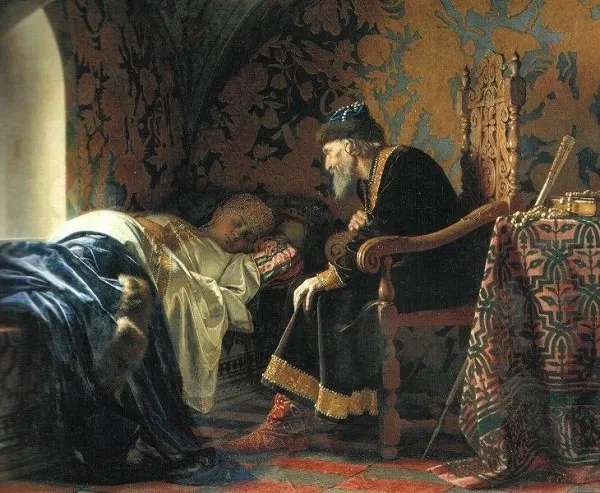
Once it became known that Kurbsky was a traitor, a correspondence developed between the two men that has been analyzed many, many times. Famously, the epistles between Ivan and Kurbsky are a wealth of information about the nature of the two schools of political thought at the time. Their own writing styles and use of evidence show a radical contrast in mentality, education and level of maturity. In his first letter, Andrei refers to Ivan as “The Antichrist” which at the time, was the single most severe accusation one man could make against another. That this appears in his first letter does not reflect well on the disgraced oligarch. He cannot control his emotions and this obscures the few salient points he does make.
Rather than descend to this level, Ivan takes this as an opportunity to outline one of the best summaries of royalist ideas in European history. The central idea is that only the centralized rule of the crown can maintain order and protect the long borders of the Russian realm, porous at the best of times. Nobles made deals with Tartars, Italians, Germans, Chechens, Chuds, Finns, Crimeans and anyone else who promised to maintain their income and privileges.
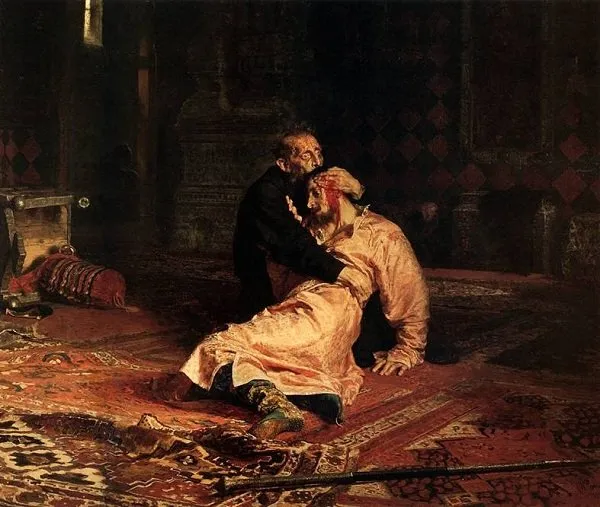
Ivan argues that nobles have a long history of giving up faith, family, nation, morals and even reality for the sake of keeping their money, lands and privileges. This is the entire reason for Ivan's reign: to finally smash this arrogant group. It almost tore Russia asunder more than once, especially in the constant threats of wealthy Novgorod to defect to Poland. In this vein, Ivan writes:
Then they 24 raised traitors against us, including our uncle, Prince Andrei Ivanovich, and these traitors absconded to Novgorod25 . . . and soon the rebellion spread to include many boyars, led by your kinsman, Prince Ivan, the son of Prince Semen, grandson of Duke Peter Romanovich, and many others. God's intervention prevented the plot from succeeding. . . . These traitors sought to hand over the cities of Radogosch, Starodub and Gomel in exchange for privileges and immunities. There is no benevolence or good will here. The moment they are insecure in their lands, they are ready to hand it over to foreigners.
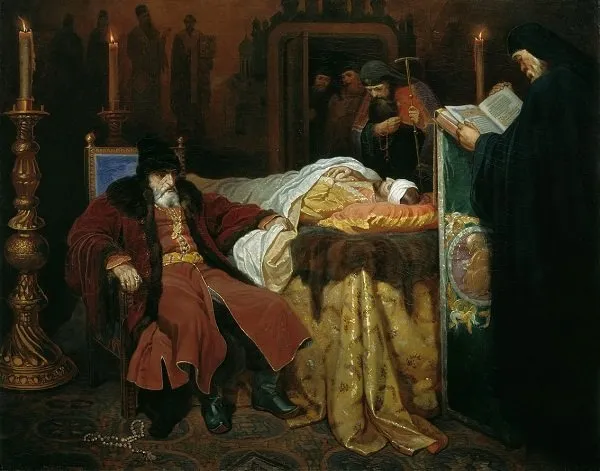
From the historical facts, no one can argue with Ivan. The nature of plutocracy is to care only about the magical attributes of money in that it grants education, power, ability, moral right and other attributes merely by possessing it. The oligarchs, usually the upper levels of the elite, had no use for collective terms such as law or nation. They cared about their talisman. Ivan then references the poisoning of his first wife. For centuries this was attributed to the “paranoia” of Ivan. That Ivan was the subject of many poisoning attempts is now no longer subject to debate.
TD Panina, the senior researcher for the Moscow Kremlin museum, engaged in a painstaking study of the chemical composition of Ivan's body and other members of the royal family. Almost every member had extremely high levels of arsenic. The maximum acceptable level in the human body is 0.08 milligrams per 100 grams of body weight; for mercury, its 0.04. Ivan had 0.15 milligrams of arsenic and a whopping 13 milligrams of mercury in his system per 100 grams. For Queen Anastasia, it was .8 and .13 respectively. Prince Ivan, the Tsar's son, had a very high 13 milligrams of mercury in his system. They did not spare babies either. The king's infant daughter Mary had 3.8 milligrams of arsenic in her system.26
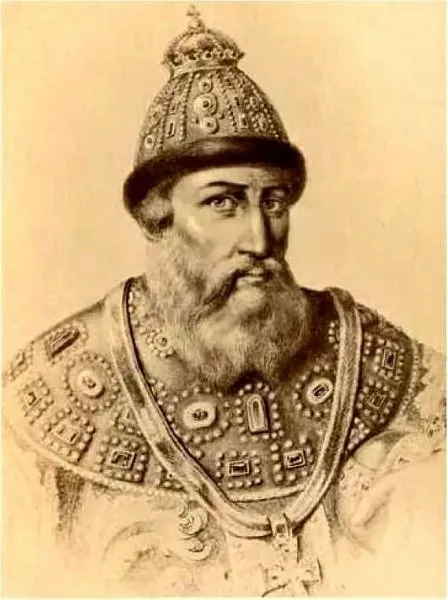
This discovery shows that Ivan was not “paranoid,” but was the subject of a relentless boyar conspiracy. It shows that the elite would wipe out the whole family if they could. They murdered children and would stop at nothing. If Ivan was right about this, how much more is being ignored?
If that is not enough, Ivan details many of the plots discussed above, showing how the oligarchy cares nothing for the people, the nation or the Orthodox faith. Hence, while Kurbsky does little more than call names in his first letter, Ivan crafts a historical work detailing specific plots, listing names and dates.
One would think that after Ivan's lengthy and detailed reply, Kurbsky would change tactics. He does no such thing, strongly suggesting he cannot do anything else. Calling Ivan a “long-winded windbag” does not help his case. Significantly, Kurbsky does show some substance and this is his admission that a unified Russia was and is a mistake. Prior to Ivan, his father and grandfather slowly built Russia from Mongol rule into a powerful state. Regions were bought, conquered or voluntarily joined Moscow under the tsars Ivan III and Basil III, Ivan's father. Kurbsky says that the old line of princes had their wealth “ plundered by your father and grandfather, taking all down to their last shirt.” As always, when Kurbsky does get into history, it is all about elite rights to property.
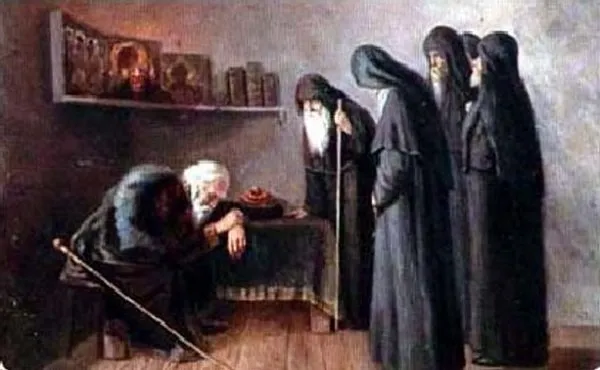
This confirms Ivan's suspicions: Kurbsky rejected the entire previous two centuries of Russian policy. He rejects the rise of Moscow and the reigns of Ivan and Basil. Yet, he served Ivan with this attitude. It is easy to conclude that he deceived everyone, seeking a chance to change sides when the crown seemed weak. Worse, Kurbsky then goes on to condemn Ivan's namecalling! It is clear that the historical detail Ivan provides goes unanswered and not even an attempt is made to refute Ivan's elaborate arguments. Conceding this, Kurbsky has nothing. Western and liberal analyses describe these exchanges as if they never read these letters.
They seem to project Kurbsky's vices onto Ivan. M. Cherniavsky writes: “From his refuge, Kurbsky wrote to Ivan, and the Tsar answered him, pouring out a flood of invective, of rhetorical devices, of historical disquisitions, of virtually all literary forms except poetry.”27 This is far more pronounced in Kurbsky from the start, but this is not mentioned. It can only be a form of ideological projection. Certainly, academic conformity has produced more absurd arguments. He then claims that Kurbsky was upholding the “old order” of “pious kings,” which he actually rejects explicitly. Then, making this worse, he goes on to caricature Ivan's argument. He says that Ivan is really arguing that he is sinless and that the tsar is inerrant.28 Nowhere is this remotely implied. This is, unfortunately, typical for scholarship in this field.
Anyway, Ivan's response shows his righteousness: he admits his own sins and asks for forgiveness. Of course, he's not admitting the fantasies of Kurbsky or the yellow journalists of the west, but just that he is not perfect. Ivan is, through example, expressing the idea of monarchy: to act as the symbol for the Idea of the nation and its place in Christian history. The tsar is the embodiment, in other words, of a nation and a people.
Kurbsky's next letter is slightly more tame, but as early as the second paragraph the hero of the urban elite can contain himself no longer. He repeats foreign rumors about executions and bloodshed, and, while not referencing them by name, speaks of the Oprichnina as the agents of this. Chances are, the oligarchy was irritated that their private armies were insufficient against elite regular forces and many families would no longer live in independent little republics of their own making.

It is noteworthy that Kurbsky several times references the Israelite King Solomon as an authority. This is not all that uncommon for the era, but the truth is that Solomon was a heretic, and died a empire builder and tyrant, using forced labor and very high taxes to create the trappings of the Assyrian or Babylonian pagan state. Part pagan and part Israelite, Solomon is the cause of the division of Old Israel and its eventual dissolution to the great empires of the region. Using Solomon as an example and holding him out as a pious authority is an admission of his own oligarchical and semi-pagain life.
Kurbsky admits to destroying part of the town of Pozega, but he argues that he spared the churches and monasteries. He blames his religiously-mixed infantry for the atrocities Ivan attributes to him. He writes that these “apostates and heretics29 without our knowledge and in our absence, having hidden their evil plans, burned a church and a monastery.” This is a very weak justification. When Ivan stormed the Bulgar trading states on the Volga, about 50% of his infantry was of Mongol or Tartar stock. Yet, despite the normal spoils being taken, no religious shrine of the Orthodox, at any point, was destroyed.
Kurbsky also states that he is sending Ivan several chapters of Cicero's work, as if to say that the great Roman was in a similar position to Kurbsky. Of course, Ivan, being one of the better educated men in Europe, was quite familiar with Roman political theory. Using Cicero, like using Solomon, is symbolic. Cicero was a natural law theorist just prior to the rise of the empire under Caesar. The republican movement was really a Senatorial oligarchy who would throw in their lot with Hannibal at a moment's notice. In fact, they might just play the role of Hannibal themselves.
Kurbsky continues in his letter,
The fierceness of your government destroyed more than one Nepotiana and many other innocents as well, many commanders and generals. Those performing noble and illustrious deeds with wisdom, men versed in military affairs and in the leadership of troops, you betrayed in murder, executions, and the killings of entire families without a trial and without cause. You listen only to one side, namely, your cunning flatterers, the destroyers of the fatherland.
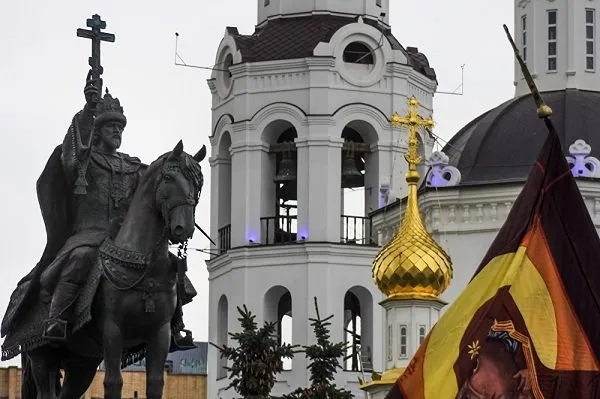
The reference to Neoptiana might be strange to some, but he was a governor sent by St. Constantine into Phrygia in order to eliminate the other “emperors” still at large.30 The soldiers attached to this mission began plundering homes in the area. Resistance was inevitable, and a war between the mayor and the governor became violent. St. Nicholas intervened to stop the unjust executions forced by Neoptiana. The authority of the saint was such that the governor and his men refused any further orders and defied Constantine's commands. Like Ivan, the governor stated to Constantine that plots were being hatched against him by local elites. Ultimately, justice prevailed and Nicholas was able to discern the true from the false.31 The use of this story puts Kurbsky in the place of St. Nicholas. Like the story relates, Kurbsky accuses Ivan of consulting sorcerers to maintain power. This is ironic, since the magic arts of the Judaizer sect were the foundation of elite revolt in Novgorod.
These exchanges are only briefly summarized here, but contain an immense wealth of information on the political views that typified the two movements. Generally, Ivan lays out the Scriptural and historical view of royal power, while Kurbsky either descends into namecalling or uses scattered classical references to justify his treason. However, one thing is clear: Kurbsky is not only anti-royal and anti-Ivan, he's also anti-Russian.
Ivan and the Legend of St. Phillip of Moscow
Metropolitan Philip was a firm supporter of Moscow's centralization and Ivan's rule. There was no good reason for Ivan to murder St. Phillip. They had known each other since childhood. Further, the conspiracy against Phillip is a matter of public record and the saint was seen as a symbol for the crown's war against oligarchy. Metropolitan Pimen was a well known enemy of Ivan as well as Phillip. So why murder his opponent's opponent?
After the 1567 uncovering of the Fedorov plot mentioned above, Phillip yet again spoke in favor of Ivan's policies. In fact, if Ivan were murdered, it was Phillip that would take his place. Abbott Paisius was promised a bishopric in exchange for a denunciation of Phillip. Noble plots did not neglect the church, since the crown and church had the same essential views about centralizing authority and legal reform.
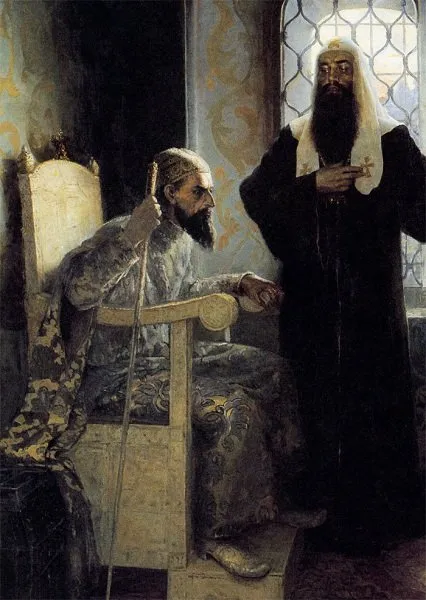
In November 1568, the bishops and conspirators gathered for the sobor that was to condemn Phillip. The verdict of the council, as well as many other documents of the time, was subsequently “misplaced.” The Archbishop Pimen loudly denounced Philip and accused him of all manner of sins. As Pimen was seeking the office of metropolitan, he certainly had motive. The very fact that Ivan did not interfere in the synod seeking to condemn his ally suggests quite a bit about Ivan's personality.
Phillip was found guilty. Ivan personally rejected the decree and sought to protect Phillip,but his long held policy was to maintain his own sphere and to permit the church to judge her own. Again, this is hardly the policy of a “tyrant.” The Metropolitan was arrested personally by one of the plotters, A. Basmanov, and imprisoned in the monastic enclosure and placed under the guard of another member of the cabal, Stepan Kobylina. In the Fall of 1569, Ivan realized that the synod was far from holy. He launched his own investigation into the matter as he was worried about a connection to Novgorod and the Judaizers: in other words, that Phillip was being attacked by that sect. St. Phillip was now a liability to the boyars as his testimony against them would be damning. He was dead in short order. Far from wanting his death, Ivan punished the real perpetrators by exiling Paisius to Valaam and the “guards” were banished to monasteries along with Pimen. Later on, these men, all left alive by Ivan, wrote the vita for “St. Phillip” the man who they tried to destroy. They concocted atrocity stories to cover their own perfidy. This became “history” within a few generations.32
Conclusion
Ivan did not trust anyone connected to the elite in Moscow, so he relied on his own Glinsky relatives who did not have Moscow roots. There was no area of policy where he was not handicapped. Metropolitan St. Makarios was a partisan of Ivan and crowned him as Ivan IV on January 16 1547. The oligarchs looked on in dismay. Ivan was the first to be anointed as the emperor of all Russia. The idea of Holy Russia was made real. The noble plots were based on the rise of the Byzantine empire in Russia: a nightmare scenario for them.
The representatives of the aristocracy put the well known Adashev and the priest Sylvester close to the throne. They were to gain the confidence of Ivan, yet, they were close to the Boyar party and Kurbsky personally. Throughout history, one of the constants is that a financial elite will never rule openly. They require a legitimate government to manipulate. This is an essential point in drawing this essay to a close.
As always, the elite require a provocation and use it as an emotional springboard to attack the legitimate government. In this case, it was the 1547 Moscow fire, killing maybe 2500 people. The elite, led by Kurbsky, quickly and uniformly spread the rumor that the Glinksy clan did this using witchcraft. This meant Ivan. In June, the Duma, now overconfident, accused Ivan and his relatives of this mass murder, black magic and the worst of crimes. This also meant that Ivan had no right to rule, since canon law would excommunicate anyone using such methods for any reason. As only an Orthodox person can be monarch, that would exclude someone dabbling in the black arts
The point is that Ivan was forced to fight these accusations and plots from a very young age. He thought that by mercy, he could win the these men to his side. He never could. The noble “commission” after the famed Moscow fire was not about facts, but about stirring up the population and creating “mobs” to take violent action against the crown. Ivan could not win and his reign was one of his personal suffering and tragedy.
Ivan was a good, virtuous and enlightened leader at a time where evil was thought to have triumphed. Ivan alone kept the floodgates of anarchy closed, as they were to break down after his death.
Russia, yet again, almost disappeared as most of Europe and parts of Asia swarmed this now leaderless country in the midst of a famine.
In 1601, just a few years after Ivan's death, Russia was starving, leaderless and under attack. Again, under elite rule, with no ruling monarch, Russia was plunged into years of war and violence. Fighting oligarchy has been the traditional job of any monarch and is the ultimate purpose of government. Anarchy does not mean lawlessness but the rule of the strong. Nihilism is the rule of oligarchs, “strongmen” who rise when legitimate power fails.
Whether it be the Shuisky yesterday or Guzinsky today, the agenda remains the same.
Bibliography:
Валишевский К. (1992) Иван Грозный. Воронеж: ФАКТ
Прониной Натария (2005). Иоанн Грозный: "Mучитель" или Мученик? ЯУЗА-ЭКСМО
Маржерет Ж (1986) Состояние Российской империи и Великого княжества Московского. В кн.: Россия XV-XVII вв. глазами иностранцев. Л., Лениздат
Кобрин ВБ (1989) Иван Грозный. Московский рабочий
Зимин АА, АЛ Хорошкевич (1982) Россия времени Ивана Грозного. Наука
Алексеев Ю.Г (1991) «к Москве хотим». Закат боярской республики в Новгороде. Лениздат. 1991
Манягин, В.Г. (2004). Апология Грозного Царя. Библиотека Сербского Креста БСК
Вознесенский, A, Фёдор Гусев (2005) Святитель Николай Чудотворец. Издание Сретенского монастыря, Москва
Soloviev EA (1997) Ivan the Terrible. Chelyabinsk
Smirnov, Ivan (1944). Ivan the Terrible. Leningrad
Sulimirski, Tadeusz (1970) The Sarmatians. Praeger Publishers
Bogatyrev, S (2007) Reinventing the Russian Monarchy in the 1550s: Ivan the Terrible, the Dynasty, and the Church. The Slavonic and East European Review 85(2): 271-293
Bolsover, GH (1957) Ivan the Terrible in Russian Historiography. Transactions of the Royal Historical Society 7: 71-89
Bobrick, Benson (1990) Ivan the Terrible. Canongate Books
Hosking, Geoffrey (2004) Russia and the Russians: A History. Harvard University Press
Madariaga, Isabel de (2005) Ivan the Terrible. First Tsar of Russia. Yale University Press
Payne, Robert and N. Romanoff (2002). Ivan the Terrible. Cooper Square Press
Troyat, Henri (1988) Ivan the Terrible. Buccaneer Books
Cherniavsky, M (1968) Ivan the Terrible as Renaissance Prince. Slavic Review 27(2): 195-211
